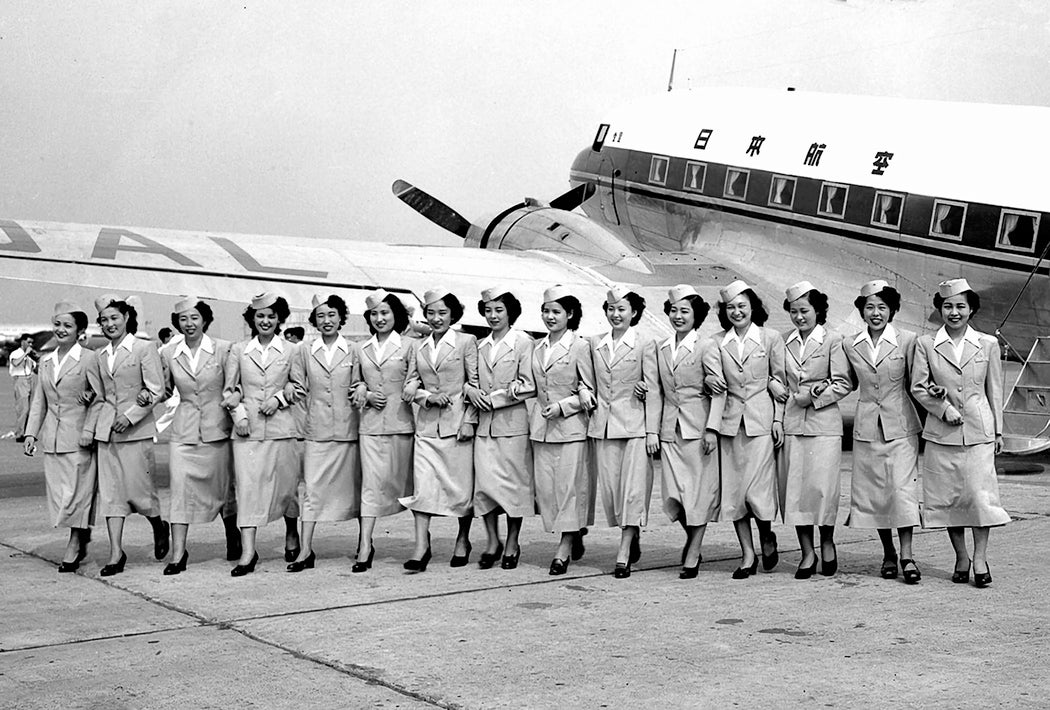In late 1945, the US-led occupation of Japan added civil aviation to the ban on Japanese military pilots and planes. Simply put, no Japanese were allowed in a cockpit. Nobody could own an airplane. No company could build an airplane or aircraft engine. Students couldn’t study aeronautics—while teachers and engineers in the field had to find new jobs. Even gliding was banned.
The ban was to prevent remilitarization. It also had an undercurrent of the racism whipped into a frenzy by the war. As science, technology, and society scholar Chihyung Jeon writes, both before and during World War II, Americans offered up various “physiological, psychological, and cultural explanations” about why the Japanese couldn’t be good fliers. For instance, Fletcher Pratt argued in a 1939 book on sea power that the Japanese had a “defective sense of balance.” Others said that the supposed racial characteristics of myopia and lack of individuality made for bad aviators. General Douglas MacArthur initially “had a hard time believing that the [Pearl Harbor] attack had been executed by Japanese pilots rather than white mercenaries.”
Occupation rules loosened up enough for Japan Airlines (JAL) to be established in 1951, but initially, the company couldn’t own or operate airplanes. The ban was only lifted with the end of occupation in the peace treaty of April 1952. After that, as Jeon explains, the Japanese had to jumpstart a civil aviation system—the Japanese archipelago stretches more than a thousand miles from north to south—and the airborne component of the Self-Defense Force.
“Everything about flying had to be remodeled to the American norm,” writes Jeon. Pilots had to be trained to fly in American cockpits and model themselves on Americans in “terms of skill, language, character, and even body.”
Though not acknowledged as such at the time, “the figure of the modern pilot,” created through a “rational” training regime, was as new to the Americans as it was to the Japanese, constructed during World War II. That figure
acquired its distinctive Americanness when it crossed the Pacific to postwar Japan and encountered the Japanese fliers struggling between their own experiences and the new model imposed on them. The Pacific stood as a huge techno-cultural gap, informed by previous misperceptions of pilots that lingered in the postwar period on both sides of the ocean.
As one Japanese veteran pilot put it, the flightless “blank” years left pilots like him behind the times. Jeon notes that there was a “typical postwar negation by the Japanese themselves of prewar and wartime Japanese practices as unscientific and even irrational.” (Cybernetics godfather Norbert Wiener, meanwhile, had argued during the war that Japanese pilots were so rationally in tune with the technology of their planes their “human-nonhuman status was blurred.”)
The first batch of Japanese fliers journeyed to Tulsa, Oklahoma, in the spring of 1952 to learn how to fly the American way and “be approved by the American system” of civil aviation. To the victor, the rules—the US more or less set the basis of international aviation at the end of the war—and the spoils: American aircraft companies like McDonnell Douglas and Boeing dominated the large commercial aircraft market for decades.
For some of the postwar Japanese pilots, the most difficult thing was learning English, the new international language of the cockpit and air traffic control. English wasn’t just required for international flights: it had to be used for domestic flights as well.
Weekly Newsletter
The first time the Japanese Emperor flew in an airplane, in August 1954, the captain and first officer of the special JAL domestic flight were Americans. In November 1954, there were thirty-eight Japanese pilots with commercial licenses. (There had been 4,800 in 1945.) JAL’S Tokyo–San Francisco run, inaugurated in 1954, also originally had American pilots. The worry was that the predominantly American passengers wouldn’t tolerate a Japanese male pilot, a rather different take from the quick acceptance of JAL’s Japanese stewardesses.
The first Japanese commercial aircraft captain to fly across the Pacific was Saburo Ejima, in April 1956. Ejima, a WWII vet, had trained in Oakland, California. A couple dozen American pilots continued flying for JAL for years to come.
Support JSTOR Daily! Join our membership program on Patreon today.







